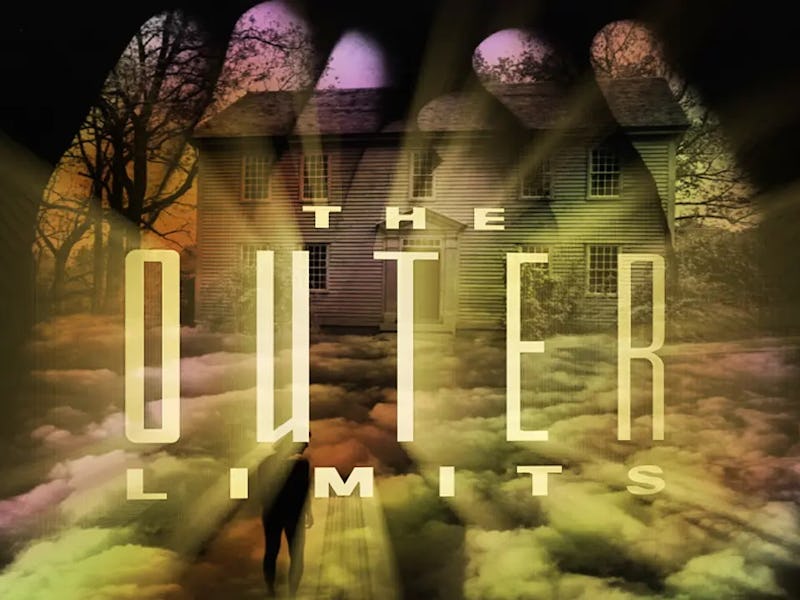On This Day In 1995, A Sexed-Up Outer Limits Resumed Transmission
The franchise went through some adjustments.

The words “There is nothing wrong with your television set. Do not attempt to adjust the picture,” spoken by the famous Control Voice (Vic Perrin), kicked off every episode of The Outer Limits during the classic ‘60s sci-fi anthology series’ woefully brief run. A modified introduction, now spoken by Kevin Conway, welcomed viewers to the 1995 revival, but the show itself was unrecognizable to fans.
Debuting on Showtime 30 years ago today, Outer Limits ’95 did away with its forebearer’s groundbreaking combination of Expressionist imagery, noirish black and white cinematography, and eerie locales, settling for a blandly conventional palette typical of 1990s cable and syndicated programming. Still, the pilot episode, "The Sandkings," featured an impressive cast led by Beau Bridges, and was based on a story by some minor author still a year out from the publication of a novel called A Game of Thrones.
As the series wore on, Outer Limits ’95 did introduce one subject the original series couldn’t touch: sex. Outer Limits ‘63 aired during a much more demure time in television: married couples slept in separate beds, and the raunchiest it ever got was in the infamous episode “ZZZZZ,” in which a queen bee mutates into a voluptuous young woman to mate with a human male. But 1990s cable, a few years away from its Golden Age of shows like The Sopranos, Six Feet Under, and Sex and the City, desperately needed to compete with broadcast networks, and the medium’s relaxed standards allowed for more prurient entertainment.
This wasn’t Cinemax, and the gratuitous sexual content didn’t find its way into most episodes. Much of it was also edited out for syndication after the initial Showtime run, and the show’s final season, which aired on SyFy, also cut back on the bare flesh. But there was enough of it to lure in viewers looking for the titillation cable offered, which helped keep Outer Limits ’95 afloat into the early 2000s.
That’s why we got episodes like “Valerie 23,” in which a disabled man (William Sadler) has sex with the robotic caregiver (Sofia Shinas) that moves in with him for a trial run. In “Bits of Love,” the sole survivor of a nuclear holocaust (Jon Tenney) makes love to simulations of beautiful women in his AI-controlled bunker. And “Caught in the Act,” arguably the show’s most notorious entry, finds virginal Alyssa Milano possessed by an alien entity that turns her into a raging nymphomaniac who absorbs the men she sleeps with, in a sort of low-rent precursor to the 2013 Scarlet Johansson film Under the Skin.
Leonard Nimoy was one of many iconic genre actors to appear on the revival.
Despite the more explicit content, “Caught in the Act” pushed a rather conservative message. The Milano character, before she’s possessed, wants to save sex for marriage, but her transformation by the alien suggests that a woman with a more liberated sexual appetite is a monster that can only be controlled by the pure, chaste love she shares with her long-suffering boyfriend. Some 30 years after the original Outer Limits premiered, the new version appeared to be sci-fi slut-shaming.
That approach goes hand in hand with the overall theme of Outer Limits ’95, which constantly warned viewers of the dangers of science and technology. While Outer Limits ’63 certainly had its share of episodes in which scientific endeavors led down grim paths, it also had a healthy respect for the ideals of progress, exploration, and curiosity. It focused on the “awe and mystery” of sci-fi, while Outer Limits ’95 was more about fear and, in the words of one marketing tagline, “boundaries we should not cross.”
That’s not to say that Outer Limits ’95 was solely fixated on breasts and boundaries. It adapted several stories by renowned writers like Harlan Ellison, Stephen King, Richard Matheson, and Larry Niven, while also employing a slew of writers and actors you’d know from most of the popular sci-fi titles of the past decades. The series had its ups and (more often) its downs, but it kept the brand alive for seven seasons and 152 episodes — 103 episodes more than the original. So yes, to some degree, sex did sell, but you can bet no one attempted to adjust the picture.